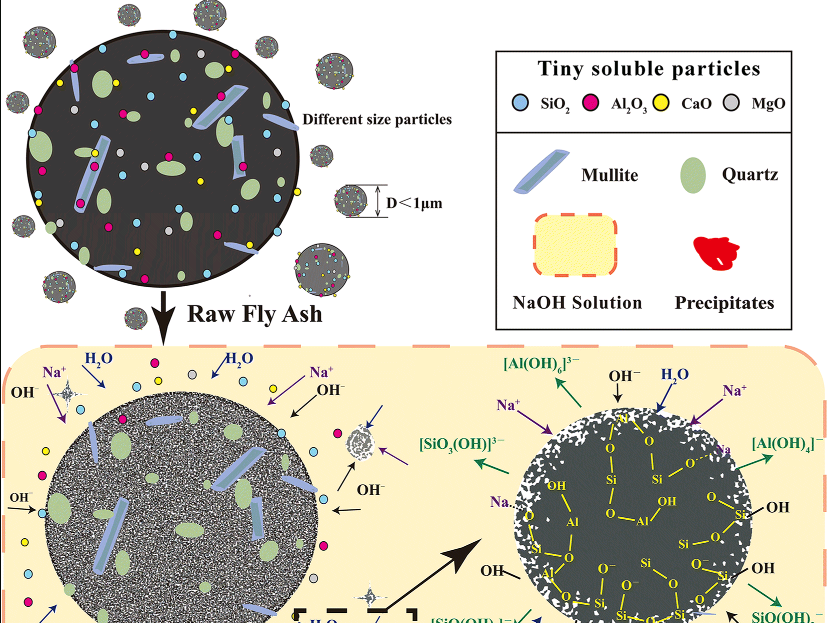Contents
Cement Clinker Quality and Composition. Soluble Alkalis.
TO DOWNLOAD THIS POST AND ALL OTHER IMPORTANT BOOKS IN CEMENT INDUSTRY KINDLY CLICK HERE

We have already discussed the importance of the alkali and sulphate minor components in the clinker in previous sessions. In sessions 1.5 and 1.6 we saw that alkalis and sulphates increase the volume of flux in the kiln and in that way promote the formation of the clinker minerals, but that they are also preferentially taken into solid solution in the C2S, and as a result inhibit the formation of C3S.
In session 1.9 we talked about the importance of the alkali to sulphate ratio in the hot meal. An excess of sulphate over alkalis can bring many kiln operational problems in the shape of hard build-ups in the preheater, ring formations in the kiln inlet, possible clinker balling, finer granulometry of the clinker, at worst leading to heavy dust recirculation from cooler to kiln, possible decomposition of C3S to C2S and attendant high free CaO clinker.
These problems arise from the formation of CaSO4 in the clinker. In terms of clinker quality and composition any CaO combined as CaSO4 will effectively reduce the LSF and C3S content of clinker.
In session 2.6 we saw that if K2O is present in significant excess of sulphate then there is the possibility of the formation of KC23S12. If this occurs then the KC23S12 is not available for conversion to C3S, the lime saturation of the remainder of the material is raised and high free CaO clinker can result.
These problems can be avoided by balancing the molar ratio of the alkalis and sulphate in the clinker in addition to the hot meal. However, balancing the alkalis and sulphates has its own significant effect on the clinker quality and the hydraulic performance of the clinker minerals.
Alkali sulphates in the clinker dissolve very quickly when cement is mixed with water. This changes the solution equilibrium with sulphate, SO42-, ions displacing hydroxide, OH¯, from solution.
Calcium hydroxide, Ca(OH)2, is one of the products of hydration of C3S.
C3S + H2O → C-S-H + Ca(OH)2
Displacement of hydroxide from the cement mixing water solution means that the equilibrium of this reaction is shifted towards the products, leading to more rapid hydration. This more rapid hydration leads to accelerated setting and early strength development, however, later strengths at 28 days can be depressed.
The magnitude of these effects depends on the total amount of alkali sulphate present in the clinker. Total alkalis as sodium equivalent, Na2Oeq, is limited to less than 0.6% in low alkali cement in order to avoid durability problems in concrete due to the alkali-silica reaction.
Na2Oeq, = %Na2O + %K2O x 62/94
Where 62 and 94 are the molecular weight of Na2O and K2O respectively.
There should be no problems controlling the setting or workability of low alkali cement. However, with higher alkali cements setting can become increasingly rapid, potentially leading to workability problems. 1.8% K2SO4 (0.97% K2O) in clinker is suggested as a maximum to avoid these problems, as K2O content increases, the degree of sulphatisation is reduced to achieve this.
This increased clinker reactivity is useful when blended cements are being produced. The pozzolanic reaction is activated by the hydration of the clinker minerals, helping to offset the low early reactivity and strength development of blended cements. Some cement companies add sodium sulphate, Na2SO4, to blended cement to achieve this effect.
The soluble alkali sulphate content of cement has the strongest correlation with the early strength development. Early strength can be boosted by up to 10%, but at the expense of a 10~15% reduction in 28 day strength.
In Session 1.6 we saw that the Aalborg technology of mineralised cement manufacture involves the addition of sulphate and fluoride to the kiln feed, this certainly involves high levels of soluble alkali sulphates being present in the clinker.
We will return to the topic of mineralised clinker and its quality characteristics in the next and final session of this module 2 of the course.